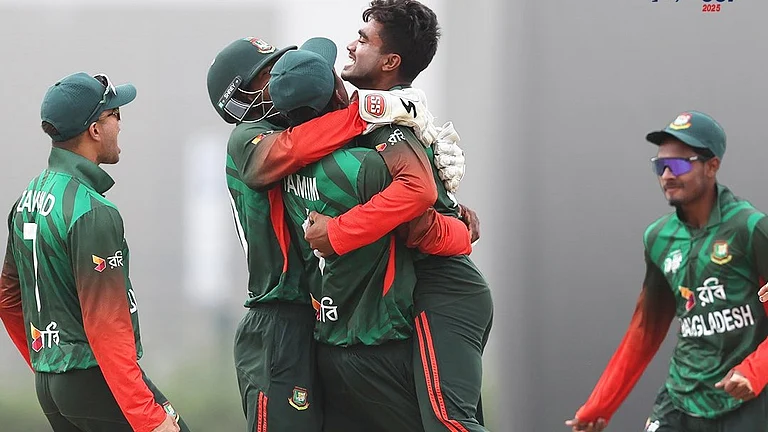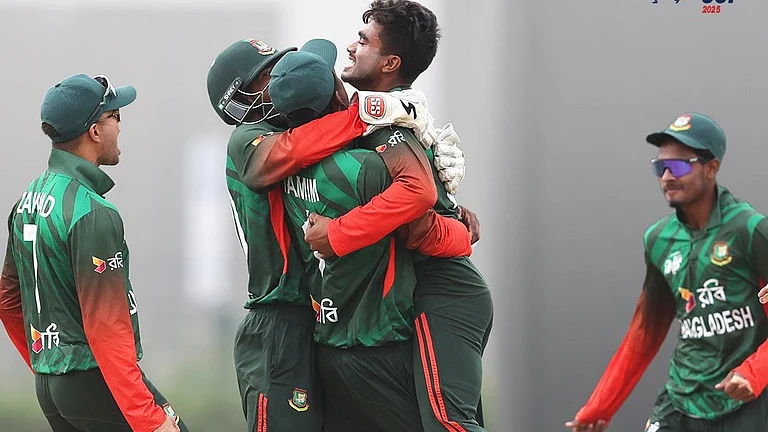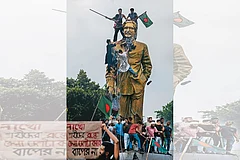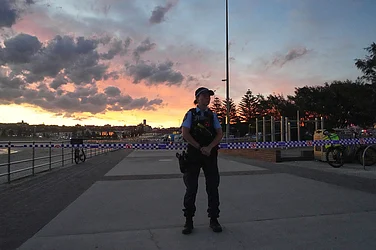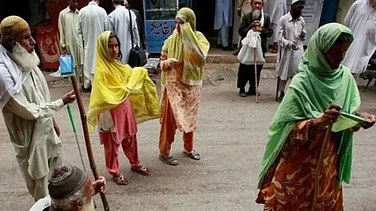While global geopolitics is in an era of uncertainty, the situation in South Asia is disconcerting for India. The instability, beginning with Afghanistan in 2021, has spread, like a domino effect, to most South Asian countries.
The latest domino is Bangladesh where public protests led to the ouster of an elected regime and saw its Parliament dissolved.
These trends of change in South Asia through elections, as in Maldives; through violence, as in Afghanistan; and through protesters pushing out elected leaders, as in Sri Lanka and now in Bangladesh, are all disconcerting.
Every South Asian country, barring India, is showing tumult. India is in a stable position after the June elections and its steady economic progress is the glue that often makes problems in South Asian countries seem surmountable.
What are the trends that are operating? In Afghanistan, the return of the Taliban, after the undignified exit of the US, left India in the lurch. An unfriendly regime now operates in Kabul. India realised the limitations of its strategic congruence with the US in South Asia. The US ignored India’s concerns while exiting Afghanistan. The Taliban has diminished the popular gains of the people of Afghanistan.
In 2022, the elected Sri Lankan government, run by the Rajapaksa brothers, faced spontaneous public protests against economic mismanagement, which left the country in dire straits. Mahinda Rajapaksa resigned from the prime ministership and was replaced by the lone United National Party (UNP) MP Ranil Wickremesinghe. The protests were not quelled, and the political class came under violent attack. President Gotabaya Rajapaksa fled the country and resigned. However, Sri Lanka did not hand over the reins of power to the army, which played its constitutional role. Parliament succeeded in electing Wickremesinghe as president. He has fulfilled the remainder of Gotabaya’s term.
The public forced the Rajapaksas out of power but did not prevent their return to Colombo to take part in further political process as preparations for the September presidential election are underway.
In Pakistan, the army is unsure. Having jailed its earlier favourite, Imran Khan, and suppressed the identity of his party—Pakistan Tehreek-e-Insaf—it came behind a coalition of the Pakistan Muslim League (PML) and the Pakistan People’s Party (PPP). They could not overcome the popularity of Khan’s party candidates, fighting as independents, and won more seats than the other parties. The attack on the corps commander’s residence in Rawalpindi manifested the limits of military power in Pakistan now. People are anguished enough to challenge the might of the main political pillar in Pakistan today.
Pakistan runs tenuously with the army showing signs of split. The political system within Pakistan is unable to accommodate popular aspirations and seems to have learned nothing from the manner in which the Awami League was treated, leading to the creation of Bangladesh.
Unsettled conditions within Pakistan remain a problem for India because they always externalise their domestic problems and raise the ante with India—the increasing terrorist incidents in Jammu and Kashmir are proof.
In the Maldives, in 2023, a government with an anti-India agenda came to power and also won the parliamentary election in 2024. There was a clear verdict for a party that pursued the ‘India Out’ policy with vigour.
In Nepal, continuous coalitions are among the communists—the Nepali Congress and the K P Oli-led Communist Party of Nepal (Unified Marxist–Leninist) [CPN (UML)]. The Nepali Congress does not have a counter-India agenda like the others who are a matter of concern. These emanate from electoral outcomes which are uncertain and unclear. In Bhutan, an election threw up a friendly prime minister. Bhutan remains an oasis of peaceful coexistence with India in the region.
In Myanmar, in 2021, the tenuous engagement between the army and Aung San Suu Kyi ended, and the army took control. The situation has worsened with elements of the National Unity Government (NUG) arming themselves and taking over several parts of the country. While this is indeed deeply disturbing for stability in Myanmar, it is an even bigger concern at the border with India where insurgents and refugees complicate humanitarian and strategic issues. Now, with Bangladesh on the boil again and an elected leader being forced to leave the country after public protests, it is not a good sign.
Countries in the region must find democratic ways of dealing with their leaders and not simply push them out after elections. This trend in Pakistan, Sri Lanka, Bangladesh, and to an extent in Myanmar, is disturbing. When PM Modi was elected in 2014, at his swearing-in, all the South Asian leaders present were democratically elected. Now, except for Bhutan, Nepal and Maldives, the rest are inserted or are interim leaders. This setback to democratic processes in South Asia, which is not of India’s making, leads to concerns on India’s borders.
Could India have done more to prevent such recurrences? Some analysts believe so. To my mind, it is extremely difficult to intervene in a country’s domestic politics to rectify the feelings of public outrage in favour of or against any government. Any perceived Indian hand would lead to heightened anti-India sentiment, which will complicate matters.
During elections, parties find it convenient to raise anti-Indian ideas as it gets them nationalist votes. This does not happen anymore with raising anti-US ideas like Sheikh Hasina tried to do, or anti-Chinese ideas for that matter. Therefore, India has to remain vigilant that in elections in South Asia, it will always be at the receiving end of negative attention and has to deal with this issue maturely.
Thirdly, while some say India has been caught napping, it is more likely that India exhibits strategic patience, which, in some cases, pays off. In Bhutan, India did not ruffle feathers, even when an alternate government was in power. In the Maldives and in Sri Lanka, India did not get provoked by their anti-India sentiments but maintained the geoeconomic partnership, which has saved both Sri Lanka and Maldives from ruin.
Sri Lankan parties are grateful to India for the help rendered at a critical time in 2022 as China fell silent. The ‘India Out’ campaign of Maldives has turned, with Mohamed Muizzu attending PM Modi’s swearing-in, and S. Jaishankar, the Minister of External Affairs of India making a successful three-day visit, where, instead of rancour, cooperation is emphasised.
In Myanmar, the situation remains difficult. India’s primary concern is its security on the frontier for which the army has always been the major partner. Within Myanmar, it would be good if they came to an agreement and settled matters because an unsettled Myanmar leads to insecurity on India’s borders. India is ready to assist Myanmar economically, but the situation is not ripe.
In Bangladesh and Nepal, India has played a waiting game, engaging with every government of any hue which emerges, looking at long-term infrastructure projects and trying to link them regionally, so that they have a greater stake in connectivity with Eastern India and the Bay of Bengal. In this, the Bay of Bengal Initiative for Multi-Sectoral Technical and Economic Cooperation (BIMSTEC) is India’s preferred vehicle, but it will need to recover from the turmoil in Bangladesh which has clear anti-Indian sentiments, with attacks on the Awami League and the Hindu minority who are perceived to be pro-Indian. The change of government in Thailand before the September BIMSTEC summit shows the challenges Indian efforts face.
India has made mature statements towards the interim government in Bangladesh, whose legality remains in doubt. India is not going to stick its neck out and call for the return of a democratically elected leader, leaving it to the wisdom of Bangladesh itself to decide its future. If economic collaboration with Bangladesh, the largest recipient of Indian lines of credit in the region, is to continue, Bangladesh would have to create the ambiance and the confidence among Indian entrepreneurs and businessmen.
Regional connectivity should not be held hostage to political changes within countries. This is a difficult lesson for India. In Myanmar, with its trilateral highway and Kaladan projects paused, it remains to be seen how the engagement with Bangladesh will go ahead. The logic of geopolitical economics is self-evident, as Sri Lanka and Maldives found out. The Taliban, too, has made efforts to engage India so that the economic cooperation that India undertook could continue for the benefit of the Afghan people. If these activities could resume with three countries where anti-Indianism prevailed, then it is a lesson for Myanmar and Bangladesh to learn.
India needs to show atmanirbharta as the new Cold War is rampaging in South Asia. China and the US are pulling countries towards themselves. China is inimical to Indian interests. After a period of understanding India in South Asia, the US is working at cross-purposes in Afghanistan, Pakistan and now Bangladesh. The limits of the Quad are evident
India would respond positively to its neighbours for any goodwill gestures that they make and would not isolate them for limited gains.
(Views expressed are personal)
MORE FROM THIS ISSUE
Gurjit Singh is a former ambassador to Germany, Indonesia, Ethiopia, ASEAN and the African Union
(This appeared in the print as 'Cause And Effect')











